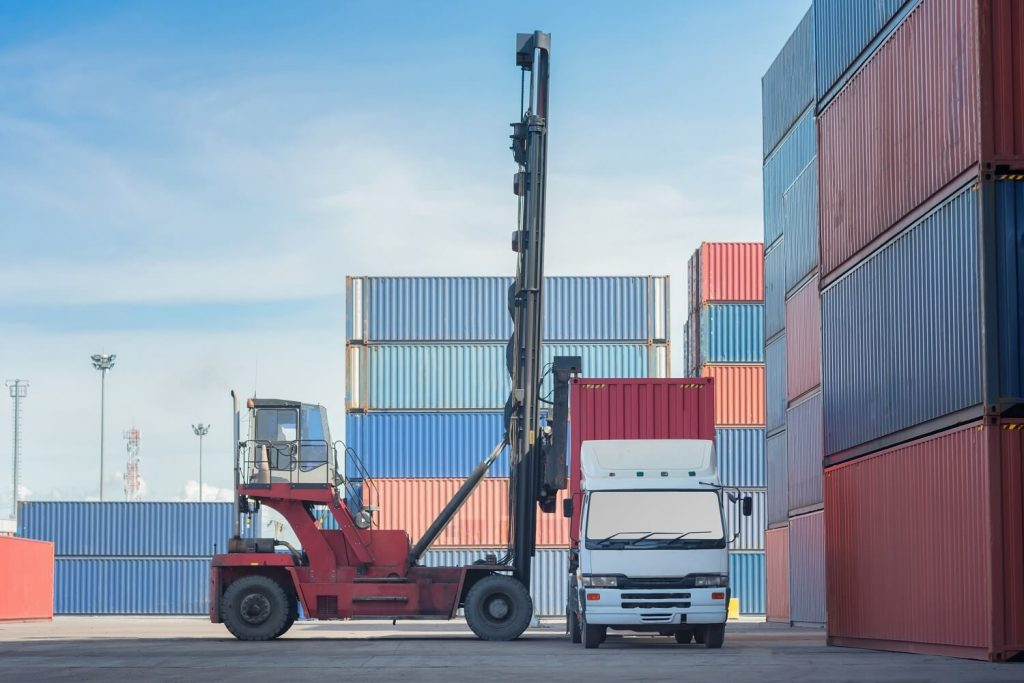Receiving Assistant (1 years diploma course)
Receiving Assistant click here
Brief Job Description
Receiving Assistants are also known as receiving clerks. Individuals in this role are responsible for
completing the paperwork and receiving inbound consignments, checking them against invoices,
identifying missing or defective items and processing returns with the distributor.
They also help with cross docking, entering information regarding goods received and their storage location in the computer system and forwarding invoices to accounts payable.

Personal Attributes
This job requires the individual to work well with his/her team and achieve joint goals. The individual must
be able to prioritize and execute tasks within scheduled time limits. The individual should be able to
maintain high concentration levels throughout his/her shift.
Minimum Educational Qualification &
Experience
10th Class
OR
8th Class (+ 2 years of ITI)
OR
8th Class (+ 1 year of ITI) with 1 Year of
experience relevant experience
OR
Certificate-NSQF (Loader/ Unloader – level 2)
with 1 Year of experience relevant
experience
Minimum Level of Education for Training in
School
Pre-Requisite License or Training Training in counting and inspecting inbound
goods.
Minimum Job Entry Age 18 Years
Last Reviewed On NA
Next Review Date NA
NSQC Approval Date
Version 3.0
Description
This unit is about preparing for receiving consignments
Elements and Performance Criteria
Obtain all the necessary information
To be competent, the user/individual on the job must be able to:
PC1. obtain the work schedule for the day along with the expected times of inbound trucks from the
transport manager

PC2. obtain the list of inbound consignments, details of number and type of goods in each
consignment and inspection checklists from the warehouse manager
PC3. find out where each truck would be parked and where each consignment would be unloaded.
PC4. understand priorities or special conditions (if any) among the consignments.
Get required equipment and perform visual inspection
To be competent, the user/individual on the job must be able to:
PC5. collect and wear all the required personal protective equipment (ppe)
PC6. make sure any stationery required like pens, paper, etc. are available for use during the work
day.
PC7. collect any receiving equipment to be used like bar code scanners, densimeters, etc. and
check to ensure that they are in good working condition
PC8. inspect the receiving area to ensure that it is clean and in safe condition before starting work.
PC9. have any issues/problems solved before starting work.
Knowledge and Understanding (KU)
The individual on the job needs to know and understand:
KU1. knowledge of organizational products and procedures
KU2. procedures for dealing with loss or damage to goods
KU3. risk and impact of not following defined procedures/work instructions
KU4. knowledge of computer systems used for documentation of inbound goods in the
organization
KU5. knowledge of all relevant safety and security procedures
KU6. knowledge of standard operating procedures (sops) and how to react in emergencies.
KU7. knowledge of inspection methods and consignment routing policies followed in the
organization
KU8. knowledge of transport companies the organization works with and their processes
KU9. knowledge of forms to be received along with inbound consignments.
KU10. knowledge of desired specifications for each product

KU11. knowledge of inspection and testing methods
KU12. knowledge to use the computer for electronic documentation of information
KU13. types of workplace hazards that one can encounter on the job and safe operating practices.
KU14. knowledge of possible difficulties in receiving inbound consignments
Generic Skills (GS)
User/individual on the job needs to know how to:
GS1. note down details regarding inspection of each inbound consignment.
GS2. fill out forms, inspection checklists pertaining to the inbound consignments
GS3. prepare detailed reports for management
GS4. read and follow instructions in the checklists
GS5. read and understand details required in the forms.
GS6. communicate clearly with managers and peers
GS7. regularly communicate with all employees to ensure activities are running smoothly
GS8. provide advice and guidance to peers and juniors
GS9. act objectively , rather than impulsively or emotionally when faced with difficult/stressful or
emotional situations
GS10. ability to make a judgment as to whether the product meets the required specification or
not.
GS11. adjust according to volume, capacity and manpower needs during peak and non-peak hours
GS12. prioritize and execute tasks within the scheduled time limits
GS13. maintain schedules and punctuality. avoid absenteeism
GS14. be a team player and achieve joint goals
GS15. flexibility to re-assess schedule in case of delays/additional orders
GS16. understand the customer requirements and ensure that they are met.
GS17. identify trends/common causes for errors and suggest possible solutions to the warehouse
manager
GS18. handle day to day problems like delays, staffing shortage, etc.
GS19. suggest methods to streamline receiving of inbound consignments
GS20. ability to estimate the value of the consignment
GS21. ability to assess whether the product meets the required specification.
GS22. ability to concentrate on task at hand and complete it without errors
Receive inbound consignments
To be competent, the user/individual on the job must be able to:
PC1. start up the computer system, log in using company credentials and ensure that the system
is working well
PC2. collect the agreement sheet from the truck driver
PC3. request driver to unseal consignment in their presence
PC4. in case of damage, take neccesary precautions including quarantining the goods, obtaining
drivers’ signature, taking notes/snapshots etc.
PC5. visually inspect the consignment, sign the agreement sheet and give it to the documentation
assistant to prepare the arrival report

PC6. in case of discrepancy in consignments against the agreement sheet, report to supervisor
PC7. prepare unloading slip. ensure the document packs are matching with the physical receipt
PC8. have the consignment unloaded and moved into the receiving area by the unloader.
PC9. ensure proper acknowledgements are endorsed by the driver as well as the receiving clerk.
Segregate goods for transfer or storage
To be competent, the user/individual on the job must be able to:
PC10. based on the labels, identify the final destination, what goods are contained and the quantity
contained in the package.
PC11. keep aside packages which are headed for a different final destination i.e.. not being stored
in the warehouse
PC12. have the loader move the packages and keep them along with other packages headed for
the same destination
PC13. if bar codes are used, scan the goods and also the package so that the information gets
updated in the system
PC14. for goods being stored (warehouse as its final destination), open the packages, use the
testing equipment to check conformity with desired specification and count all the inbound
goods
PC15. segregate and keep aside damaged goods. put the other goods back into the packages and
note down the shortage
PC16. if bar codes are used, scan the bar codes so that each good received (in good or bad
condition) gets recorded in the system
PC17. note down the results of inspection for each consignment, with specific details about
condition of packaging, damaged goods and value of incoming consignment as per
guidelines provided. report on non-conformance tick off steps completed with the inspection
checklist. ensure that all steps have been done.
PC18. move the packages with goods to be stored in the warehouse into the staging area to be put
away by the binner
Resolve discrepancies with distributor
To be competent, the user/individual on the job must be able to:
PC19. discuss damages or shortages with the distributor.
PC20. arrange to have the compensatory goods sent at the earliest and negotiate the terms
PC21. escalate any issues in negotiation to the warehouse manager.
PC22. fill out damage claim forms, missing goods form as required and give them to the
documentation assistant for subsequent processing.
Knowledge and Understanding (KU)
The individual on the job needs to know and understand:
KU1. knowledge of organizational products and procedures
KU2. procedures for dealing with loss or damage to goods
KU3. risk and impact of not following defined procedures/work instructions
KU4. knowledge of computer systems used for documentation of inbound goods in the
organization
KU5. knowledge of all relevant safety and security procedures
KU6. knowledge of standard operating procedures (sops) and how to react in emergencies.
KU7. knowledge of inspection methods and consignment routing policies followed in the
organization
KU8. knowledge of transport companies the organization works with and their processes
KU9. knowledge of processes involved in inbound and outbound transport.
KU10. knowledge of forms to be received along with inbound consignments
KU11. knowledge of desired specifications for each product
KU12. knowledge of inspection and testing methods.

KU13. knowledge to use the computer for electronic documentation of information
KU14. types of workplace hazards that one can encounter on the job and safe operating practices.
KU15. knowledge of possible difficulties in receiving inbound consignments.
Generic Skills (GS)
User/individual on the job needs to know how to:
GS1. note down details regarding inspection of each inbound consignment.
GS2. fill out forms, inspection checklists pertaining to the inbound consignments
GS3. prepare detailed reports for management.
GS4. read and follow instructions in the checklists
GS5. read and understand details required in the forms
GS6. communicate clearly with managers and peers
GS7. regularly communicate with all employees to ensure activities are running smoothly
GS8. provide advice and guidance to peers and juniors
GS9. act objectively , rather than impulsively or emotionally when faced with difficult/stressful or
emotional situations
GS10. ability to make a judgment as to whether the product meets the required specification or
not.
GS11. adjust according to volume, capacity and manpower needs during peak and non-peak hours
GS12. prioritize and execute tasks within the scheduled time limits
GS13. maintain schedules and punctuality. avoid absenteeism.
GS14. be a team player and achieve joint goals
GS15. flexibility to re-assess schedule in case of delays/additional orders
GS16. understand the customer requirements and ensure that they are met.
GS17. identify trends/common causes for errors and suggest possible solutions to the warehouse
manager.
GS18. handle day to day problems like delays, staffing shortage, etc.
GS19. suggest methods to streamline receiving of inbound consignments
GS20. ability to estimate the value of the consignment.

GS21. ability to assess whether the product meets the required specification.
GS22. ability to concentrate on task at hand and complete it without errors
Description
This unit is about completing end of day activities.
Elements and Performance Criteria
Update information in the system
To be competent, the user/individual on the job must be able to:
PC1. input the details noted down into the system
PC2. if bar codes are used, check to see that the information in the system matches the
information noted down.
PC3. ensure that actions taken/agreed upon for damaged or missing items are also entered in the
system
PC4. provide information in the system for the documentation assistant to prepare invoices
Report to management
To be competent, the user/individual on the job must be able to:
PC5. inform the warehouse manager about any delays in inbound consignments or missed
deliveries
PC6. report any issues faced in negotiation with distributors regarding replacement for damaged
or missing goods.
PC7. prepare reports on the quality of inbound goods, number of damaged or missing goods, etc.
Log off computer and clean up
To be competent, the user/individual on the job must be able to:
PC8. save all data, safely log off and switch off the computer.
PC9. return any PPE and testing equipment used to their respective storage racks.
PC10. have any spillages or breakages in the unloading and receiving areas cleaned up by the
loader
PC11. check to ensure that the computer is off, the work area is clean and ready for the next work
day
Knowledge and Understanding (KU)
The individual on the job needs to know and understand:
KU1. knowledge of organizational products and procedures
KU2. procedures for dealing with loss or damage to goods
KU3. risk and impact of not following defined procedures/work instructions
KU4. knowledge of computer systems used for documentation of inbound goods in the
organization
KU5. knowledge of all relevant safety and security procedures
KU6. knowledge of standard operating procedures (SOPs) and how to react in emergencies
KU7. knowledge of inspection methods and consignment routing policies followed in the
organization
KU8. knowledge of transport companies the organization works with and their processes
KU9. knowledge of processes involved in inbound and outbound transport
KU10. knowledge of forms to be received along with inbound consignments
KU11. knowledge of desired specifications for each product
KU12. knowledge of inspection and testing methods.
KU13. knowledge to use the computer for electronic documentation of information
KU14. types of workplace hazards that one can encounter on the job and safe operating practices
KU15. knowledge of possible difficulties in receiving inbound consignments
Generic Skills (GS)
User/individual on the job needs to know how to:
GS1. note down details regarding inspection of each inbound consignment.
GS2. fill out forms, inspection checklists pertaining to the inbound consignments.
GS3. prepare detailed reports for management.
GS4. read and follow instructions in the checklists
GS5. read and understand details required in the forms
GS6. communicate clearly with managers and peers
GS7. regularly communicate with all employees to ensure activities are running smoothly
GS8. provide advice and guidance to peers and juniors
GS9. act objectively , rather than impulsively or emotionally when faced with difficult/stressful or
emotional situations
GS10. ability to make a judgment as to whether the product meets the required specification or not
GS11. adjust according to volume, capacity and manpower needs during peak and non-peak hours
GS12. prioritize and execute tasks within the scheduled time limits
GS13. maintain schedules and punctuality. avoid absenteeism
GS14. be a team player and achieve joint goals
GS15. flexibility to re-assess schedule in case of delays/additional orders
GS16. understand the customer requirements and ensure that they are met
GS17. identify trends/common causes for errors and suggest possible solutions to the warehouse
manager
GS18. suggest methods to streamline receiving of inbound consignments
GS19. ability to estimate the value of the consignment
GS20. ability to assess whether the product meets the required specification
GS21. ability to concentrate on task at hand and complete it without errors
Maintain health, safety and security measures
To be competent, the user/individual on the job must be able to:
PC1. comply with safety regulations and procedures in case of fire hazards, biohazards, etc.
PC2. understand the use of all protective personal equipment (ppe) required for work
PC3. wear all safety equipment including protective gear, helmets etc. when checking inbound
consignments
PC4. follow organization procedures with respect to documentation.
PC5. recognize and report unsafe conditions and practices.
PC6. adhere to security regulations of the company
Knowledge and Understanding (KU)
The individual on the job needs to know and understand:
KU1. knowledge of organizational products and procedures
KU2. procedures for dealing with loss or damage to goods
KU3. risk and impact of not following defined procedures/ work instructions
KU4. knowledge of computer systems used for documentation of inbound goods in the
organization
KU5. knowledge of all relevant safety and security procedures
KU6. knowledge of Standard Operating Procedures (SOPs) and how to react in emergencies
KU7. knowledge of inspection methods and consignment routing policies followed in the
organization
KU8. knowledge of transport companies the organization works with and their processes
KU9. knowledge of processes involved in inbound and outbound transport
KU10. knowledge of forms to be received along with inbound consignments.
KU11. knowledge of desired specifications for each product.
KU12. knowledge of inspection and testing methods.
KU13. knowledge to use the computer for electronic documentation of information
KU14. types of workplace hazards that one can encounter on the job and safe operating practices
KU15. knowledge of possible difficulties in receiving inbound consignments
Generic Skills (GS)
User/individual on the job needs to know how to:
GS1. note down details regarding inspection of each inbound consignment.
GS2. fill out forms, inspection checklists pertaining to the inbound consignments
GS3. prepare detailed reports for management
GS4. read and follow instructions in the checklists
GS5. read and understand details required in the forms.
GS6. communicate clearly with managers and peers
GS7. regularly communicate with all employees to ensure activities are running smoothly
GS8. provide advice and guidance to peers and juniors
GS9. act objectively , rather than impulsively or emotionally when faced with difficult/stressful or
emotional situations
GS10. ability to make a judgment as to whether the product meets the required specification or not
GS11. adjust according to volume, capacity and manpower needs during peak and non-peak hours
GS12. prioritize and execute tasks within the scheduled time limits
GS13. maintain schedules and punctuality. avoid absenteeism
GS14. be a team player and achieve joint goals
GS15. flexibility to re-assess schedule in case of delays/additional orders
GS16. understand the customer requirements and ensure that they are met.
GS17. identify trends/common causes for errors and suggest possible solutions to the warehouse
manager
GS18. handle day to day problems like delays, staffing shortage, etc.
GS19. suggest methods to streamline receiving of inbound consignments
GS20. ability to estimate the value of the consignment.
GS21. ability to assess whether the product meets the required specification
GS22. ability to concentrate on task at hand and complete it without errors
Description
This unit is about employability skills, Constitutional values, becoming a professional in the 21st Century,
digital, financial, and legal literacy, diversity and Inclusion, English and communication skills, customer
service, entrepreneurship, and apprenticeship, getting ready for jobs and career development.
Scope
The scope covers the following :
Introduction to Employability Skills
Constitutional values – Citizenship
Becoming a Professional in the 21st Century
Basic English Skills
Communication Skills
Diversity & Inclusion
Financial and Legal Literacy
Essential Digital Skills
Entrepreneurship
Customer Service
Getting ready for Apprenticeship & Jobs
Elements and Performance Criteria
Introduction to Employability Skills
To be competent, the user/individual on the job must be able to:
PC1. understand the significance of employability skills in meeting the job requirements
Constitutional values – Citizenship
To be competent, the user/individual on the job must be able to:
PC2. identify constitutional values, civic rights, duties, personal values and ethics and
environmentally sustainable practices
Becoming a Professional in the 21st Century
To be competent, the user/individual on the job must be able to:
PC3. explain 21st Century Skills such as Self-Awareness, Behavior Skills, Positive attitude, selfmotivation, problem-solving, creative thinking, time management, social and cultural
awareness, emotional awareness, continuous learning mindset etc.
Basic English Skills
To be competent, the user/individual on the job must be able to:
PC4. speak with others using some basic English phrases or sentences
Communication Skills
To be competent, the user/individual on the job must be able to:
PC5. follow good manners while communicating with others
PC6. work with others in a team
To be competent, the user/individual on the job must be able to:
PC7. communicate and behave appropriately with all genders and PwD
PC8. report any issues related to sexual harassment
Financial and Legal Literacy
To be competent, the user/individual on the job must be able to:
PC9. use various financial products and services safely and securely
PC10. calculate income, expenses, savings etc.
PC11. approach the concerned authorities for any exploitation as per legal rights and laws
Essential Digital Skills
To be competent, the user/individual on the job must be able to:
PC12. operate digital devices and use its features and applications securely and safely
PC13. use internet and social media platforms securely and safely
Entrepreneurship
To be competent, the user/individual on the job must be able to:
PC14. identify and assess opportunities for potential business
PC15. identify sources for arranging money and associated financial and legal challenges
Customer Service
To be competent, the user/individual on the job must be able to:
PC16. identify different types of customers
PC17. identify customer needs and address them appropriately
PC18. follow appropriate hygiene and grooming standards
Getting ready for apprenticeship & Jobs
To be competent, the user/individual on the job must be able to:
PC19. create a basic biodata
PC20. search for suitable jobs and apply
PC21. identify and register apprenticeship opportunities as per requirement
Knowledge and Understanding (KU)
The individual on the job needs to know and understand:
KU1. need for employability skills
KU2. various constitutional and personal values
KU3. different environmentally sustainable practices and their importance
KU4. Twenty first (21st) century skills and their importance
KU5. how to use basic spoken English language
KU6. Do and dont of effective communication
KU7. inclusivity and its importance
KU8. different types of disabilities and appropriate communication and behaviour towards PwD
KU9. different types of financial products and services
KU10. how to compute income and expenses
KU11. importance of maintaining safety and security in financial transactions
KU12. different legal rights and laws
KU13. how to operate digital devices and applications safely and securely
KU14. ways to identify business opportunities
KU15. types of customers and their needs
KU16. how to apply for a job and prepare for an interview
KU17. apprenticeship scheme and the process of registering on apprenticeship portal
Generic Skills (GS)
User/individual on the job needs to know how to:
GS1. communicate effectively using appropriate language
GS2. behave politely and appropriately with all
GS3. perform basic calculations
GS4. solve problems effectively
GS5. be careful and attentive at work
GS6. use time effectively
GS7. maintain hygiene and sanitization to avoid infection








